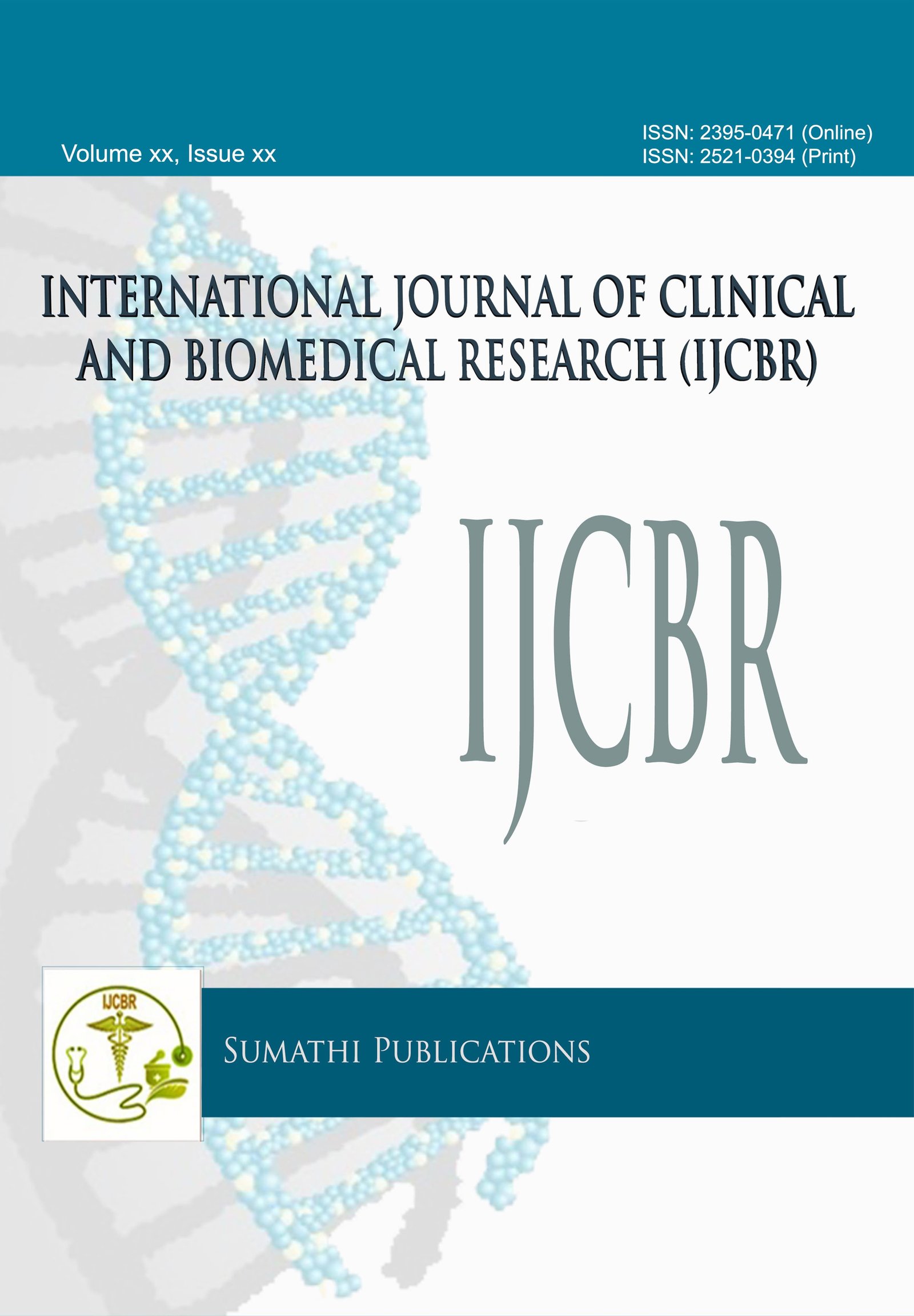IS THERE ANY SIGNIFICANT CORRELATION BETWEEN AGE, SEX, BMI, CLINICAL AND ENDOSCOPIC FINDINGS IN DYSPEPSIA?
DOI:
https://doi.org/10.5455/ijcbr.2018.42.05Abstract
Introduction: Dyspepsia is a common complaint in clinical practice and is present in various clinical dilemmas. Though dyspeptic patient show wide spectrum of symptoms, some are found to have structural cause and others have functional cause. Aim: The aim of the study was to correlate clinical and endoscopic findings in patient with dyspepsia: and also assess correlation of H. Pylori infection with endoscopic findings. Method: The prospective observational study was conducted at tertiary care centre from July 2015 to September 2017 on total 114 cases presented with dyspepsia after considering specific inclusion and exclusion criteria. A detailed history was taken and clinical examination was carried out. All patients underwent oesophagogastroduodeno (OGD) scopy. Two endoscopic mucosal biopsies were taken from the antrum and body of the stomach for rapid urease test (RUT). Results: No correlation was observed between prevalence of dyspepsia and age, sex or body mass index (BMI). In majority of patients clinically suspected findings were confirmed on endoscopy. Majority of patients were found to have structural findings on endoscopy. In most of the subjects with positive endoscopy findings in stomach and/or duodenum had H. pylori infection. Demographic factors like smoking, alcohol, excessive consumption of coffee or tea, NSAIDs or aspirin use were found to have influencing effects on prevalence of dyspepsia. Conclusion: Structural dyspepsia is more common in our study than functional dyspepsia. Significant correlation was observed between clinical and endoscopic findings in patient with dyspepsia.
Keywords: Dyspepsia; Oesophagogastroduodenoscopy; H. pylori; Gastroesophageal reflux disease.
Downloads
Downloads
Published
Issue
Section
License
The journal allows the author(s) to hold the copyright without restrictions and will retain publishing rights without restrictions.
The submitted papers are assumed to contain no proprietary material unprotected by patent or patent application; responsibility for technical content and for protection of proprietary material rests solely with the author(s) and their organizations and is not the responsibility of the journal. The main (first/corresponding) author is responsible for ensuring that the article has been seen and approved by all the other authors. It is the responsibility of the author to obtain all necessary copyright release permissions for the use of any copyrighted materials in the manuscript prior to the submission.
What are my rights as an author?
It is important to check the policy for the journal to which you are submitting or publishing to establish your rights as
Author. Journal's standard policies allow the following re-use rights:
- The journal allows the author(s) to hold the copyright without restrictions.
- The journal allows the author(s) to obtain publishing rights without restrictions.
- You may do whatever you wish with the version of the article you submitted to the journal.
- Once the article has been accepted for publication, you may post the accepted version of the article on your own personal website, your department's website or the repository of your institution without any restrictions.
- You may not post the accepted version of the article in any repository other than those listed above (i.e. you may not deposit in the repository of another institution or a subject-matter repository) until 12 months after publication of the article in the journal.
- You may use the published article for your own teaching needs or to supply on an individual basis to research colleagues, provided that such supply is not for commercial purposes.









